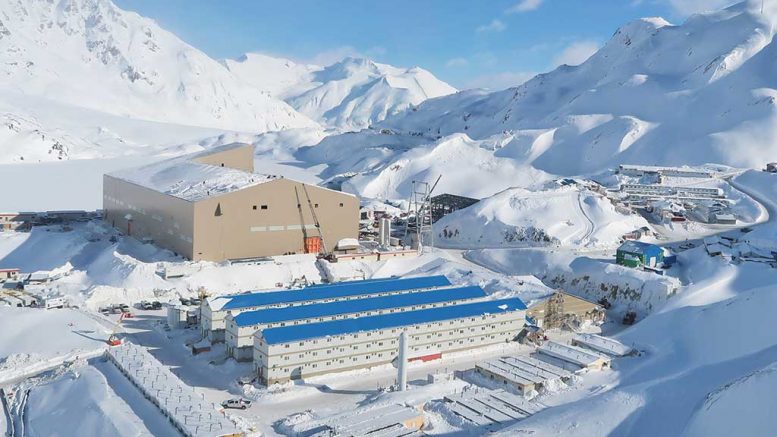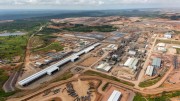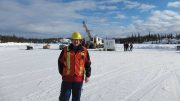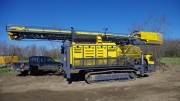The Northern Miner presents another edition in its ongoing data journalism series where geographic and economic variables are combined to establish an overall state of play for mining jurisdictions.
This edition explores British Columbia, which is in the midst of a contentious provincial election that could see the Liberal party lose its grip on a majority that has spanned 16 years. The B.C. electorate headed to the polls on May 9, but due to several close ridings, and nearly 200,000 absentee ballots, the balance of power between the Liberals and New Democratic Party (NDP) will remain in limbo through at least May 24.
Back in 2011, the Liberals’ B.C. jobs plan included a pledge to facilitate the construction of “eight new mines” by 2015, so it’s a good time to take an in-depth look at how the provincial mining industry has played out over the past five years.
The study leverages the Intelligence Mine database to outline trends in B.C. mineral production, development, and exploration. The data is largely confined to publicly-listed companies and conventional hard-rock mining operations. Information is cross-referenced against B.C.’s Assessment Report (ARIS) database, while aggregate quarries and certain private, industrial operations are not included due to compliance and disclosure limitations. Small-scale and placer operations are also not considered.
The data set is not exhaustive, but instead indicates jurisdictional trends in mineral exploration and development.
In addition, operations on care and maintenance, or proceeding through mine closure, are not included in the study.
Figure 1 charts the major mineral and coal operations in British Columbia. The size of the geographic dot denotes mine size by total number of on-site employees. The most notable additions over the data period include: New Gold‘s (TSX: NGD; NYSE: NGD) re-activation of the New Afton copper-gold mine, Imperial Metals‘ (TSX: III) Red Chris copper-gold mine, and Centerra Gold‘s (TSX: CG; US-OTC: CAGDF) Mt. Milligan copper-gold mine. Copper Mountain Mining (TSX: CMMC; US-OTC: CPPMF) reopened its Copper Mountain mine near Princeton in mid-2011.
B.C.’s coal industry has suffered from low coal prices for both metallurgical and thermal products over the past few years, though the southeastern coalfields, dominated by Teck Resources (TSX: TCK.B; NYSE: TCK), remain quite dominant in terms of job creation, especially as met coal prices recover. Teck has announced that its Coal Mountain operations will be closed by the end of 2017. Furthermore, operations like Conuma Coal Resources‘ Brule project have subsequently gone private following a period of re-structuring and bankruptcies.
Meanwhile, Pretium Resources‘ (TSX: PVG: NYSE:PVG) Brucejack underground gold mine is included as it is due to hit commercial production later this year. The project represents a major win for the B.C. mining industry considering it was advanced from discovery to production in just over five years. In addition, engineering firm JDS Silver is closing in on production at its small-scale Silvertip underground silver mine near the Yukon border.
[table id=9 /]
The Brucejack, Mt. Milligan, and Red Chris projects represent the only true “greenfield” construction projects since the early 1990s, which begs the question: What does B.C.’s mineral potential look like moving forward?
Figure 2 outlines active mineral projects that have been the subject of an engineering study during the past seven years. Despite many of the assets being advanced to a scoping stage, a number have subsequently run into sociopolitical and/or permitting problems.
Compliance Coal is mounting a lawsuit against the Canadian Environmental Assessment Agency (CEEA) and the federal and provincial governments over the proposed Raven coal mine near Courtenay, British Columbia. Meanwhile, Pacific Booker Minerals‘ (TSXV: BKM; US-OTC: PBMLF) has been mired in court proceedings with the B.C. Ministry of Environment over its Morrison Lake copper-gold mine, while Taseko Mines (TSX: TKO; NYSE-MKT: TGB) has been embroiled in a heated war of words for years with regulators and local population over its New Prosperity copper-gold project. Similarly, the future of KGHM‘s Ajax copper-gold mine outside Kamloops remains up in the air as the project moves through a joint provincial-federal environmental review amid staunch environmental opposition.
The prolonged period of lower base and precious metal prices has taken a toll on many other projects. Chieftain Metals effectively went bankrupt attempting to develop its Tulsequah Chief deposit in northwestern B.C., while private-equity firm Resource Capital Fund took the Kitsault molybdenum-lead project private after deciding it was uneconomic at low metal prices. Meanwhile, New Gold opted to develop its Rainy River gold deposit in Ontario over its larger Blackwater gold deposit in British Columbia.
Seabridge Gold‘s (TSX: SEA; NYSE: SA) KSM copper-gold asset and AuRico Metals’ (TSX: AMI; US-OTC: ARCTF) Kemess Underground brownfield project both received environmental permits, but will likely require substantially higher metal prices to move ahead. For example, AuRico CEO Chris Richter told The Northern Miner in late March that the company would like to see copper prices in excess of US$3 per lb. before deciding to reactivate the historic Kemess site.
There may be some near-term production potential at IDM Mining‘s (TSX: IDM; US-OTC: IDMMF) brownfield Red Mountain polymetallic site, where the company intends to complete an environmental impact statement later this year.
Next, we will look at drilling activity in B.C. to outline some of the most active projects, in terms of both exploration and development:
Figure 3 considers 887 reported drill intercepts since 2015 to gauge the activity level for B.C. projects. The dot size is dictated by raw number of reported mineralized intercepts, so it measures only activity and does not account for grade or width. Pretium was extremely busy at Brucejack because the deposit’s high-grade quartz-carbonate vein and breccia mineralization required a large amount of in-fill and pre-production drilling.
Pretium’s success at Brucejack has fueled a rise in exploration activity in the northwestern Golden Triangle region. Significant activity has been focused on brownfield projects, however, with AuRico being quite active at Kemess, while Barkerville Gold Mines (TSXV: BGM; US-OTC: BGMZF) has been busy in the historic gold camps that make up its Cow Mountain and Cariboo assets.
There was also drilling around active mines. Imperial Metals was drilling at its Mount Polley operation, while Taseko punched a couple of holes at its flagship Gibraltar mine. The overall trend points to a lack of greenfield discovery, as nearly 50% of the reported intercepts occurred on projects classified as “advanced exploration,” which equates to a project nearing, or at, resource delineation. There was an earlier-stage exploration push in the Golden Triangle last summer, but it has yet to result in a major discovery.
According to data from the B.C.’s Ministry of Energy and Mines (MEM) and the federal government’s Natural Resources Canada (NRCan), B.C. ranked fourth in 2016 with roughly 14% of Canadian exploration spending taking place in the province. B.C.’s share of exploration investment has been trending downward since 2012, when it peaked at $734 million. Last year the two levels of government identified mineral exploration investment of $220 million in the province.






Be the first to comment on "TNM Data Miner: Taking stock of British Columbia’s mining industry"